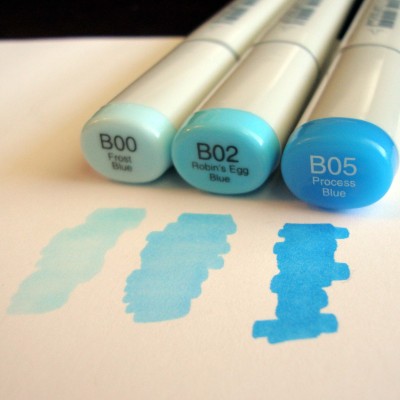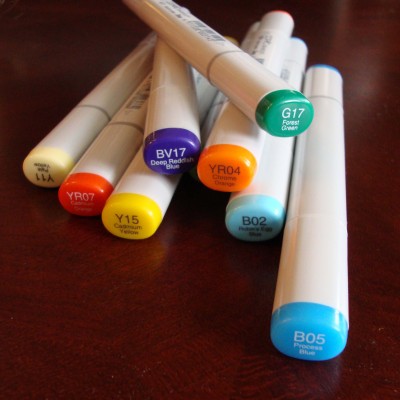This is part 1 of a series of articles by Michelle Houghton on copic markers.
Do you have a drawer full of Copic markers because they are the latest craze? Have you been waiting to break them out, though, because you don’t know where to start? Or maybe you haven’t invested yet because you’re not sure what the big deal is, or what to buy.
Let me share just a little bit about these markers to get you going. The information is what I am gathering as I discover more about this fun tool myself. I am not a certified instructor (yes they exist) but an enthusiast, and I enjoy sharing as I go. Copic markers have been around for a while, over 25 years in fact. They were designed for artists and designers with their needs in mind. Copic markers are filled with an alcohol-based dye ink. The advantage to this is that it provides the capability for blending colors together without destroying your paper. The pens are meant to be refilled with ink, and even the pen nubs or tips can be replaced as they wear out. What’s more, once dry, the alcohol ink is archival.
There are 4 different styles of Copic markers available right now but the one you will see most frequently used in the crafting industry is the Copic “sketch” marker. These have a flat oval shape so they won’t roll off your table. They have two tips–a medium sized chisel for tight control and a brush-like tip. You can find them at craft stores but they’re more easily found art supply stores.
 If, after learning a little more, you decide you would like to invest here are two things you need to know. The Copic Sketch markers currently have 334 colors to choose from and this number continues to grow. Before you buy, go to the Copic Library. Scroll down, find the color chart, and print it off to take with you whenever you go shopping. This way you can keep track of the pens you’ve purchased. Also understand that the numbering system on the end of the pen tells you if the pens will blend well with each other. The whole magic to these pens is their ability to blend. HOWEVER, you need to use a combination of the right markers for that to work. On the colored cap of each pen there will be a label with 1 or 2 letters and 1 to 4 numbers. The letter(s) represent the color family that marker is part of. The number(s), in laymen’s terms, represent how light or dark the pen is. The first number is how vibrant or bright the color is so a marker with the first number a 0 is going to be very bright while one starting with a 9 is going to be very dull or gray. The last digit tells you how light or dark that marker is within that set. To get pens that will blend well together you want two pens that have the same letter and same first number, the last number should be within 2 or 3 numbers of each other. You can also blend across color families but this is more complicated and an entirely different lesson. You need at least 2 or 3 pens in a range to do color blending.
If, after learning a little more, you decide you would like to invest here are two things you need to know. The Copic Sketch markers currently have 334 colors to choose from and this number continues to grow. Before you buy, go to the Copic Library. Scroll down, find the color chart, and print it off to take with you whenever you go shopping. This way you can keep track of the pens you’ve purchased. Also understand that the numbering system on the end of the pen tells you if the pens will blend well with each other. The whole magic to these pens is their ability to blend. HOWEVER, you need to use a combination of the right markers for that to work. On the colored cap of each pen there will be a label with 1 or 2 letters and 1 to 4 numbers. The letter(s) represent the color family that marker is part of. The number(s), in laymen’s terms, represent how light or dark the pen is. The first number is how vibrant or bright the color is so a marker with the first number a 0 is going to be very bright while one starting with a 9 is going to be very dull or gray. The last digit tells you how light or dark that marker is within that set. To get pens that will blend well together you want two pens that have the same letter and same first number, the last number should be within 2 or 3 numbers of each other. You can also blend across color families but this is more complicated and an entirely different lesson. You need at least 2 or 3 pens in a range to do color blending.
Copic markers are pricey. You can find decent deals on the web or at sales but most people will find they have to buy only a few pens at a time and can slowly build a collection. Try them out in a store before you buy if you can–or buy only two or three that will blend as a start so you can play with them before shelling out big bucks.
[mhoughton]


